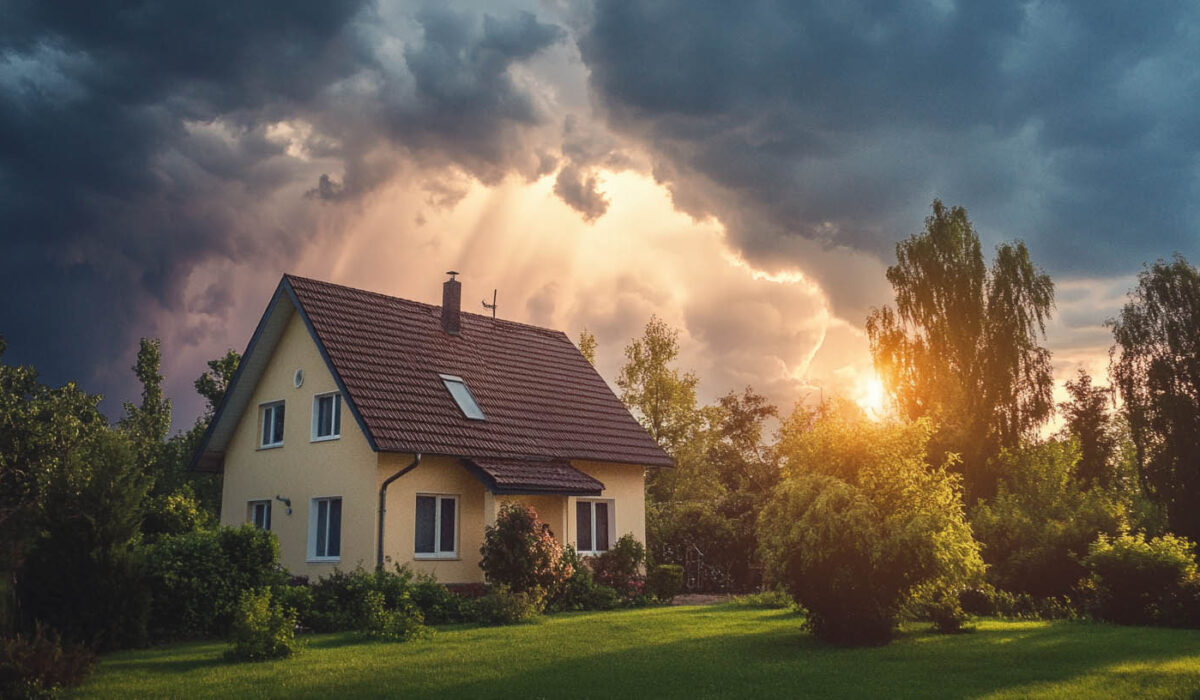Storms pose significant risks to property, often leading to costly repairs and reduced structural integrity. Taking proactive measures to safeguard your home can mitigate potential damage and ensure the safety of occupants. This guide provides comprehensive strategies to help protect your property before, during, and after severe weather events.
Conduct Regular Property and Roof Inspections
Routine inspections are essential for identifying vulnerabilities in your property. A thorough evaluation of your home, especially before storm season, ensures timely repairs and minimizes risks.
Key Areas to Inspect
- Roof: Look for loose or missing shingles, damaged flashing, and weak spots that could allow water infiltration. Repairing these promptly reduces the likelihood of leaks during heavy rain.
- Siding: Damaged or loose siding is more likely to detach during high winds, potentially causing further damage. Secure or replace compromised sections.
- Fencing and Outdoor Fixtures: Loose fence posts, unsecured furniture, or broken fixtures can become hazardous projectiles. Secure these items to prevent damage to the property or neighboring homes.
Example
A homeowner in Florida reinforced loose shingles and siding before hurricane season, avoiding water damage that impacted nearby properties.
Maintain Proper Drainage Systems
Effective water drainage protects your home’s foundation and prevents flooding. Gutters, downspouts, and storm drains must function properly to channel water away from the property.
Tips for Maintaining Drainage Systems
- Clean Gutters Regularly: Remove leaves, debris, and obstructions to ensure smooth water flow.
- Inspect Downspouts: Ensure they extend far enough from the foundation to prevent pooling water.
- Check Storm Drains: Clear local storm drains of debris to reduce neighborhood flooding risks.
Reinforce Windows and Doors
Windows and doors are vulnerable points during storms. Reinforcing these areas can prevent water and wind from entering your home.
Protection Methods
- Install Storm Shutters: Shutters provide an additional layer of protection against flying debris.
- Reinforce Glass: Apply impact-resistant film or upgrade to storm-resistant windows.
- Seal Doors: Ensure doors have tight seals and install door sweeps to prevent water intrusion.
Trim Trees and Remove Overhanging Branches
Overgrown or weakened trees pose a significant risk during storms. Trimming branches that hang over your home or power lines can prevent damage from falling debris.
Recommended Practices
- Prune Regularly: Remove dead or weak branches that could break during strong winds.
- Assess Tree Health: Consult an arborist to evaluate the stability of large trees near your property.
- Clear the Yard: Remove fallen branches, tools, or toys that could become projectiles.
Secure Outdoor Items and Equipment
Unsecured outdoor items can cause significant damage during high winds. Storing or anchoring these items is a simple but effective way to reduce risks.
Items to Secure
- Furniture: Move patio furniture, grills, and planters indoors or secure them with heavy-duty straps.
- Tools and Equipment: Store gardening tools, ladders, and recreational equipment in a garage or shed.
- Vehicles: Park cars in a garage or away from trees and power lines.
Strengthen Roof and Structural Components
A strong roof and well-maintained structure are critical for storm resilience. Reinforcing these elements reduces the likelihood of severe damage.
Roof Reinforcements
- Apply Hurricane Straps: Secure the roof to the walls of your home for added stability.
- Inspect Underlayment: Ensure the roof’s underlayment is intact to prevent water infiltration.
- Work with Professionals: Hire experienced contractors to inspect and fortify your roof.
Omega Roofing, LLC, located in Jackson, TN, specializes in preparing roofs for severe weather. Their Atlas Pro-certified team ensures every roof they service is storm-ready and reliable.
Develop an Emergency Plan
Being prepared for emergencies ensures the safety of your family during severe weather. A comprehensive plan minimizes confusion and ensures everyone knows their responsibilities.
Components of a Plan
- Identify Safe Zones: Designate areas in your home that offer the most protection during a storm.
- Prepare a Kit: Include essentials such as flashlights, batteries, water, non-perishable food, and a first-aid kit.
- Communication: Share the plan with all family members and establish a way to stay in touch during power outages.
Post-Storm Actions to Prevent Further Damage
Once the storm has passed, a timely assessment can prevent lingering issues from escalating. Inspect your property carefully and address damage immediately.
Steps to Take
- Document Damage: Take photos for insurance claims and keep a detailed record of losses.
- Assess the Roof: Check for missing shingles, punctures, or leaks that need urgent attention.
- Clean Up Safely: Wear protective gear and remove debris cautiously to avoid injury.
FAQs About Minimizing Storm Damage
What should I do if my roof leaks during a storm?
Use tarps or buckets to manage water intrusion temporarily, and contact a roofing professional immediately for repairs.
How often should I inspect my roof for damage?
Inspect your roof at least twice a year and after major storms to identify potential issues.
Can I reinforce my home against storms without major renovations?
Yes, simple steps like installing storm shutters, trimming trees, and securing outdoor items are effective.
What should I include in a storm emergency kit?
Include water, non-perishable food, a flashlight, batteries, a first-aid kit, important documents, and communication devices.
Does homeowners’ insurance cover storm damage?
Most policies cover storm-related damage, but it’s essential to review your specific coverage and file claims promptly.
Conclusion
Proactively protecting your property from storm damage ensures safety and minimizes repair costs. Regular maintenance, reinforcement measures, and a clear emergency plan make a significant difference. Partnering with professionals like Omega Roofing ensures your roof and property are well-prepared for any storm, safeguarding your home and family.
Read also: Reasons Roof Repair Should Be a Priority

